Definition
According to the American Heritage dictionary, to play legato is to play a piece of music "in a smooth, even style without any noticeable break between the notes."
In order to play legato on our instrument, we will use our left hand to play long runs on the fret board without picking any strings with the right hand.
Building Strength
Because of its demanding effort on the left hand, it's important to build strength gradually and consistently. This first exercise will warm up all the muscles of the left hand. Practice this slowly and make sure that only the string that is played is heard.
Remember while practicing that only the first note should be picked, all the following notes should be hammered on and pulled off with the left hand.
Exercise 1
 Exercise 2
Exercise 2
 Exercise 3
Exercise 3
 Exercise 4
Exercise 4
 Exercise 5
Exercise 5
 Connecting Ideas Together
Connecting Ideas Together
In order to play long musical ideas, we will use some slides to avoid having any picking. The following exercise is designed to help our fingers in that matter.
 Stretching
Stretching
Because legato technique is so demanding on the left hand, it's important to stretch your muscles and get them used to play wide intervals. The following exercises are designed to help you in that matter. If an interval is too wide for you, don't over do it. Play these exercises starting off of all the frets of the instruments.
Exercise 1
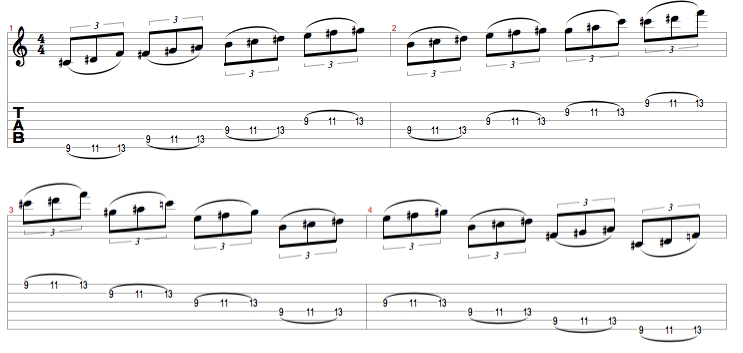 Exercise 2
Exercise 2
 Exercise 3
Exercise 3
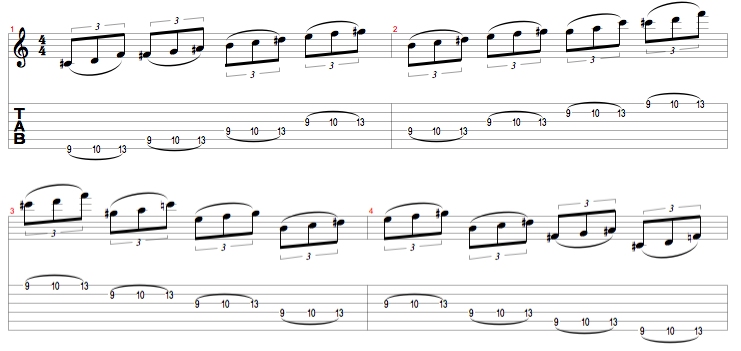 Exercise 4
Exercise 4
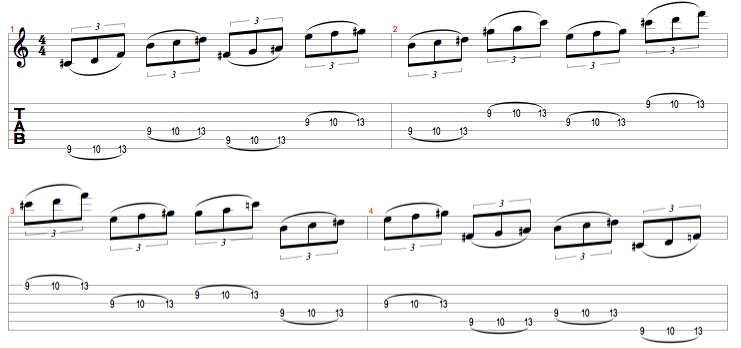 3 Notes Per String Scales
3 Notes Per String Scales
3 notes per string scales are great tools to play legato over. Following are the seven modal positions taken out of the major scale. It's very important to memorize the following scales; they will really improve your playing and help you play long legato runs without having to think where to go.
 Exercise 1 (A Major)
Exercise 1 (A Major)
 Exercise 2 (A Major)
Exercise 2 (A Major)
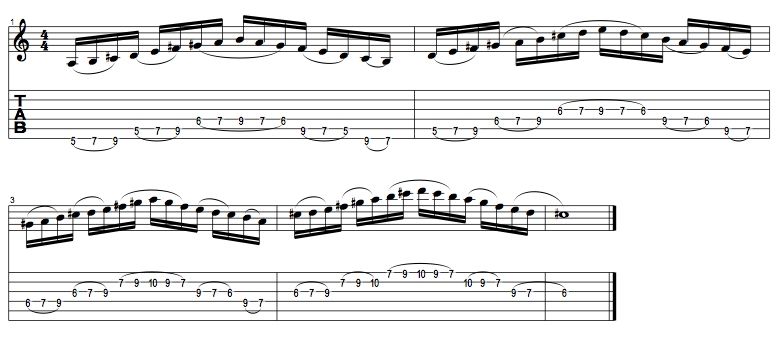 Exercise 3 (A Major)
Exercise 3 (A Major)
 Exercise 4 (A Major)
Exercise 4 (A Major)
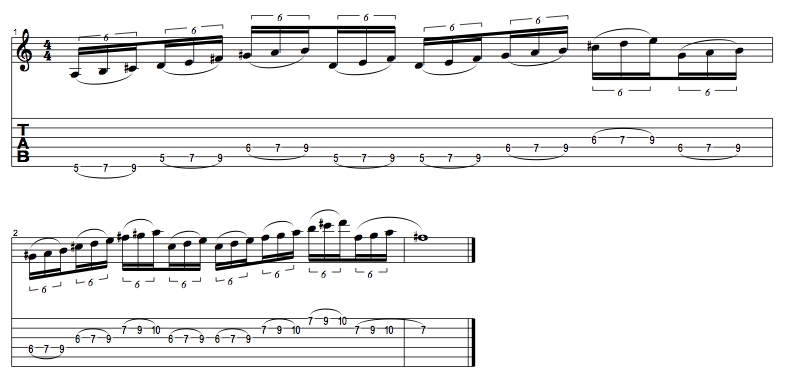 Exercise 5 (A Major)
Exercise 5 (A Major)
 3 Notes Per String Pentatonic
3 Notes Per String Pentatonic
These next shapes are minor pentatonic scales. Because of the way they are built, they will help us develop long legato runs.
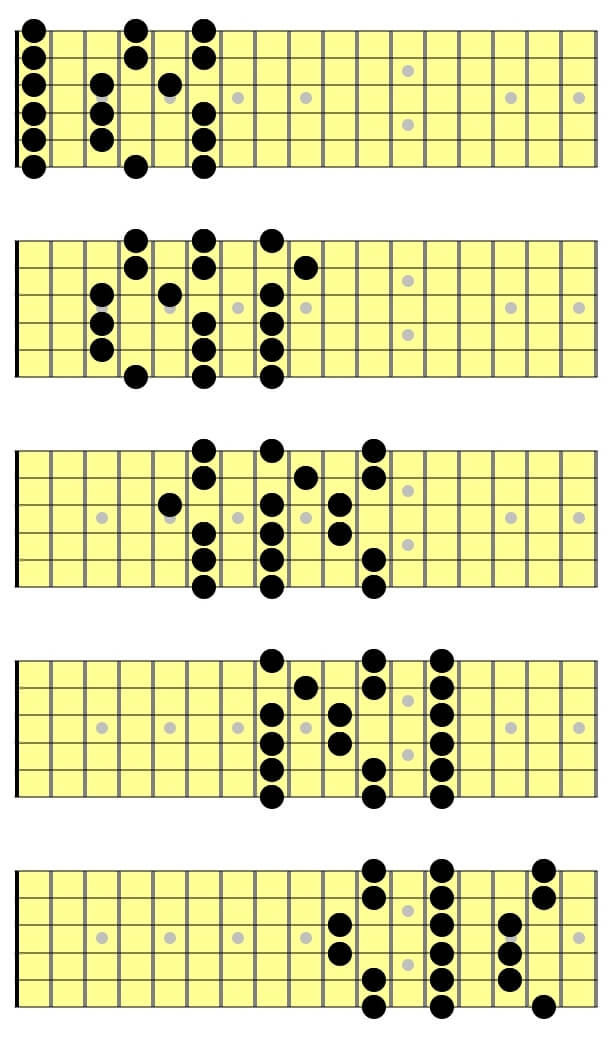 A Minor Pentatonic Lick 1
A Minor Pentatonic Lick 1
 A Minor Pentatonic Lick 2
A Minor Pentatonic Lick 2
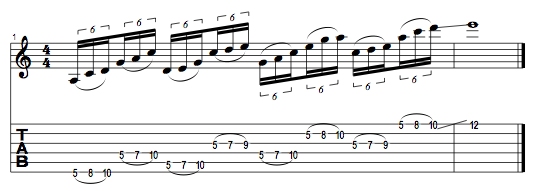 A Minor Pentatonic Lick 3
A Minor Pentatonic Lick 3
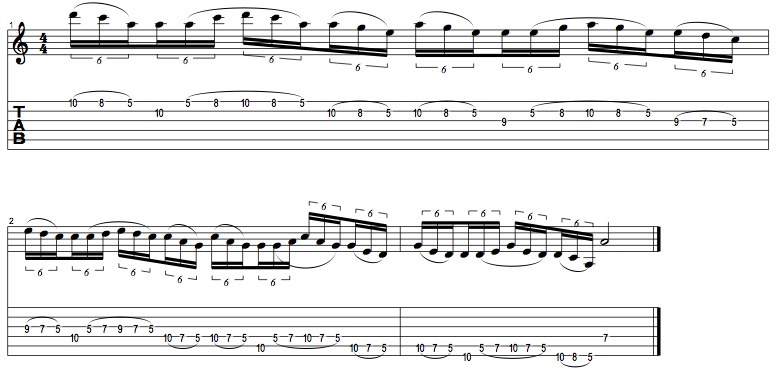 E Minor Pentatonic Lick 1
E Minor Pentatonic Lick 1
 E Minor Pentatonic Lick 2
E Minor Pentatonic Lick 2
 E Minor Pentatonic Lick 3
E Minor Pentatonic Lick 3
 3 Notes Per String Minor Blues Pentatonic
3 Notes Per String Minor Blues Pentatonic
By slightly rearranging the disposition of the notes, it's possible to create a minor blues pentatonic scale that has 3 notes per string. The scale has the advantage of covering almost the whole neck allowing us to play really nice legato licks.
 A Minor Blues Lick 1
A Minor Blues Lick 1
 A Minor Blues Lick 2
A Minor Blues Lick 2
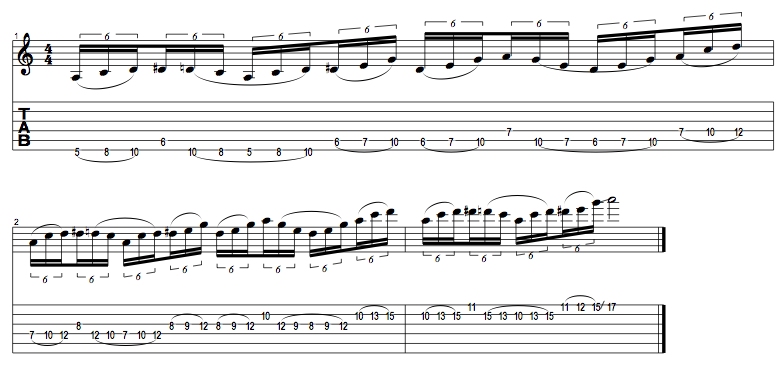 Muting the Strings
Muting the Strings
When playing a musical piece that is legato only, it can be a good idea to mute all your strings close to the neck. Several methods can be used. If you are recording a lead in legato, I recommend attaching a headband to the top of the neck. You won't be able to play open strings, but this will help you get rid of all the unnecessary noises. When playing live, you can use your right hand to mute all the strings close to the top of the neck. Using that muting technique with the right hand, here are a few exercises to work on.
B Major 1
 B Major 2
B Major 2
 Final Thoughts
Final Thoughts
While legato can be a very effective way to play fast, don't forget to keep working on your alternate picking technique. There will be times when legato won't be the best choice in terms of technique. It is recommended to practice all different playing techniques in order to be comfortable in all playing situations.
Practice well!